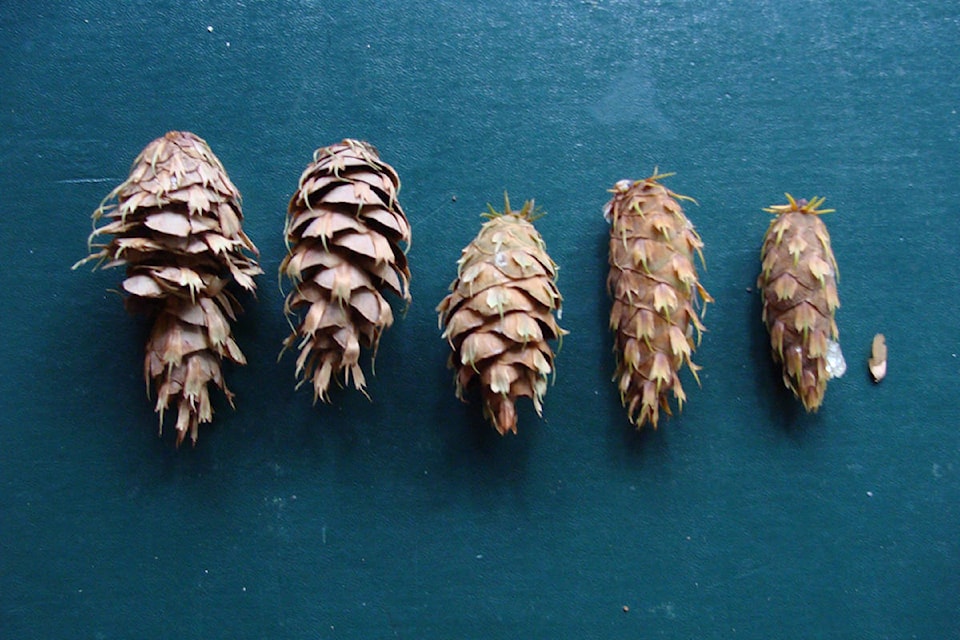Anyone familiar with Douglas fir trees has probably noticed they have a good crop of cones this year. According to people involved with tree seed collection, 2018 could be one of the most productive in decades.
Last week I had the opportunity of picking Douglas fir cones as part of the reforestation program for the Eniyud Community forest in the West Chilcotin. A crew was working in the Tatla Lake area, where small-diameter fir trees were cut so that the pickers could easily collect the cones. In some cases, cones can be picked from the lower limbs of larger trees.
After a quick introduction to the process by Peter Shaughnessy, the local project manager, I was loaned a 20-litre plastic bucked and sent on my way to where the faller was working. The quality control is fairly straightforward. No diseased, deformed or older dry, open cones. I was also given a pair of disposable gloves, as the cones and branches are loaded with resin and your hands, arms and clothes are soon stained with the sticky residue.
Depending on how productive the trees are and how far away you are from the road, a beginner can expect to make around 20 dollars an hour. An experienced picker on a productive site with ideal conditions may double the pay on some days. A good picker usually has two buckets on the go and returns to the collection vehicle where the cones are transferred to a fine mesh (jute) sack. The bags are then placed in a shed, where they are moved regularly to encourage the drying process. The jute sacks are specially designed to allow air movement to facilitate drying but also keep the small seeds from falling out when they leave the cones.
Eventually, all of the cones from a number of projects are bundled together and sent to the provincial Tree Seed Centre in Surrey, where seeds are cleaned, sorted, tested, registered and certified then stored in specialized temperature controlled facilities waiting for orders.
The seeds are about the half the size of a rice grain with a delicate wing attached. When the cones dry naturally on the tree, the seeds fall from the cones and begin to spin like a gyrocopter which carries them some distance from the parent tree when there is a slight breeze. According to one source, most of the seeds land within 100 metres of the parent tree. As indicated in one reference, it is important to pick the cones at the right time; too early and the seed may not be mature enough, but too late and most of the seeds may have left the cones.
Around my place just outside of Williams Lake, fir seeds were seen all over the ground and on my deck, which indicates the time could be right for collecting. The red squirrels are also taking advantage of the abundance of cones and have been dropping many on the ground and then packing them off to storage places throughout the yard.
Jim Hilton is a professional agrologist and forester who has lived and worked in the Cariboo-Chilcotin for the past 40 years. Now retired, Hilton still volunteers his skills with local community forests organizations.
